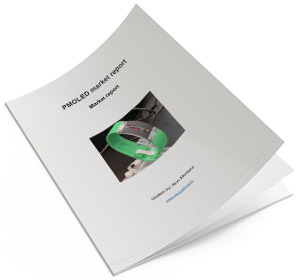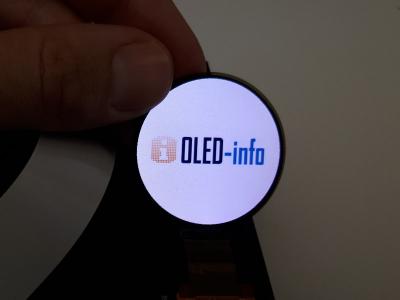OLED displays use organic materials that emit light when electricity is applied. OLEDs enable emissive, bright, thin, flexible and efficient displays. OLEDs are set to replace LCDs in all display applications - from small displays to large TV sets.
PMOLED: Passive Matrix OLED
PMOLED stands for Passive-Matrix OLED, which relates to the way you control (or drive) the display. A PMOLED display uses a simple control scheme in which you control each row (or line) in the display sequentially (one at a time). PMOLED electronics do not contain a storage capacitor and so the pixels in each line are actually off most of the time. To compensate for this you need to use more voltage to make them brighter. If you have 10 lines, for example, you have to make the one line that is on 10 times as bright (the real number is less then 10, but that's the general idea).
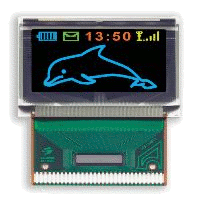 A PMOLED panel by Univision
A PMOLED panel by Univision
So while PMOLEDs are easy (and cheap) to fabricate, they are not efficient and the OLED materials suffer from lower lifetime (due to the high voltage needed). PMOLED displays are also restricted in resolution and size (the more lines you have, the more voltage you have to use). PMOLED displays are usually small (up to 3" typically) and are used to display character data or small icons: they are being used in wearable devices, small gadgets and sub displays
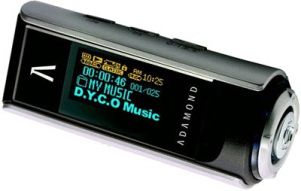
PMOLED vs AMOLED
The other kind of OLED display is called an AMOLED (or Active-Matrix OLED). An AMOLED uses a TFT that contains a storage capacitor which maintains the line pixels lit all the time (even though just one line is changed each time). AMOLEDs consume less power than PMOLEDs, have faster refresh rates and allows to build larger display with higher resolutions. AMOLEDs are also more complicated and expensive to fabricate.
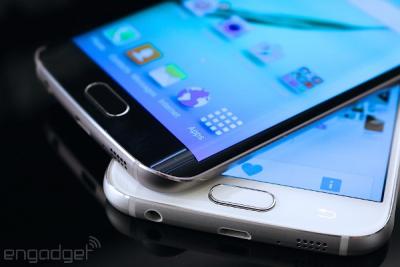
AMOLEDs today are being used as displays for smartphones, digital cameras - and even OLED TVs.
Flexible and transparent PMOLEDs
Some small and simple flexible (conformable) PMOLED displays are already on the market. Japan's Futaba for example is producing several such displays, including a 1.4" 128x16 film PMOLED display adopted in several fitness bands from Garmin, HTC and others.
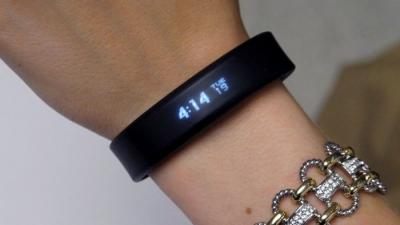
Transparent PMOLEDs are currently in development, with some segmented panels already on the market - but as of early 2018, no dot-matrix transparent PMOLEDs are available.
Looking for PMOLED suppliers?
Are you looking to adopt an PMOLED display for your device? Today there are several PMOLED producers (mostly in China and Taiwan), each making their own kinds of standard and custom PMOLED displays, with a total of dozens of different displays on the market.
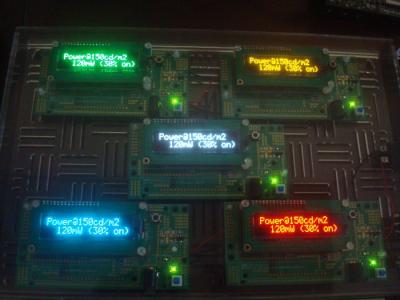
The OLED Marketplace is our very own comprehensive OLED catalog, in which you can find most of the PMOLED displays on the market. Click here to browse our extensive catalog.
The PMOLED Market Report
If you want to fully understand the PMOLED market and industry, check out our PMOLED Market Report. This comprehensive report explains:
- PMOLED production fabs
- Next-generation PMOLED technologies
- Flexible and transparent PMOLEDs
- PMOLED for automotive applications
The report package also provides datasheets and product catalogs and a detailed list of PMOLED producers.
Further reading
The latest PMOLED news:
Pioneer to supply PolyPhotonix with OLED panels for its diabetes sleep mask
UK-based PolyPhotonix, has been researching OLED technologies for many years, and its first commercial product will be the Noctura OLED sleep mask which helps patients with Diabetic Retinopathy.
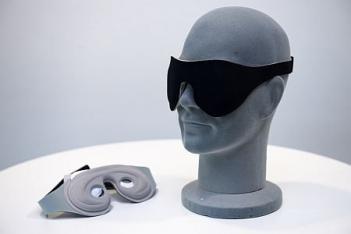
The company announced today that it has signed a deal with Pioneer for the supply of OLED panels for the sleep masks.
OLED-Info's foldable, flexible, VR/AR, transparent, microdisplays, PMOLED, automotive and graphene OLED market reports updated to July 2020
Today we published new versions of our market reports - that cover the flexible, VR/AR, microdisplays, automotive, PMOLED and graphene OLED markets. OLED-Info provides comprehensive niche OLED market reports, and our reports cover everything you need to know about the niche market, and can be useful if you want to understand how the OLED industry works and what this technology can provide for your own industry. The reports are now updated to July 2020.
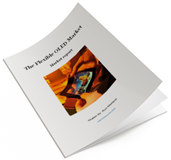 The Flexible and Foldable OLED Market Report:
The Flexible and Foldable OLED Market Report:
- Why flexible displays and lighting panels are so exciting
- What kind of flexible displays are currently on the market
- All about the foldable OLED market and industry
- What the future holds for flexible OLEDs
- How to acquire flexible OLEDs for your products
The report package provides a good introduction to the flexible and foldable OLED market - present and future. It details both flexible displays and lighting technologies. Read more here!
A Q&A with Dr. York Tsai, Wisechip's Vice President of R&D
WiseChip Semiconductor, based in Taiwan, is one of the world's leading PMOLED maker (in fact in 2015 Wisechip said it's the world's second largest). Wisechip is developing next-generation PMOLED displays, including flexible panels, transparent panels and Hyperfluorescence/TADF PMOLEDs.
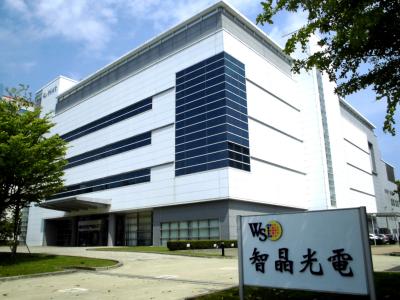
WiseChip recently announced its first, and the world’s first, Hyperfluorescence display, using TADF materials provided by Kyulux. Can you tell some more about this display and its properties?
This 2.70 128x64 product is adopted mostly in industrial products. The size matters in such market but the main problem was to increase the brightness due to the limited efficiency of the fluorescence emitters. The Hyperfluorescence technology helps to settle the problem and can reach up 2.5 times brighter. It performs much better readability so users do not have to stand right in front of the device. This feature adds to the value of the end product.
Kyulux announces first shipment of OLED TADF emitters to Wisechip
TADF emitter developer Kyulux announced that it has shipped the first batch of its yellow TADF emitter to Taiwan's Wisechip to be used it the world's first TADF / Hyperfluorescence display, the 2.7" PMOLED announced in October 2019 - which means that the display will likely start to ship soon.
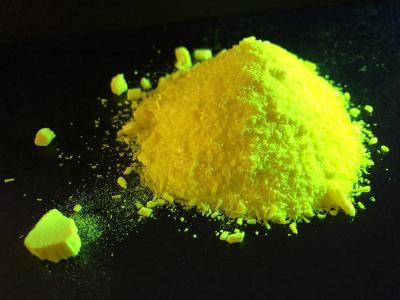
Wisechip's first HF PMOLED is a 2.7" 128x64 monochrome yellow display, that reaches a brightness of 220 nits - 2.5 times brighter than Wisechip's fluorescent yellow PMOLED. The lifetime of this display is 50,000 hours. Wisechip says this display is aimed for the medical, industrial and electronic products markets, and in the future it will launch TADF/HF PMOLEDs for the wearable and consumer electronics markets as well.
So you want a custom OLED for your project, what does it take?
There are many standard OLED displays on the market, ranging from small PMOLED displays to smartphone-sized AMOLEDs with embedded touch abilities (and even larger ones, of course). As every company wants the optimum display for its product, many reach out to us to assist with designing a custom OLED for their project. But what does this process really entail? And who it is right for?
Does it make sense to engage an OLED display maker with a custom display? It depends on your application, budget and volume requirement. As you will see below, creating a custom OLED is never a simple project and will require a hefty sum (tooling fee, also referred to by some as NRE, or Non-Recurring Engineering) and a large minimum order requirement (MOQ). Remember that the OLED industry is still an emerging one and the displays (and all related services) are relatively expensive compared to LCDs.
OLED-Info's foldable, flexible, VR/AR, transparent, microdisplays, PMOLED, automotive and graphene OLED market reports updated to January 2020
Today we published new versions of our market reports - that cover the flexible, VR/AR, microdisplays, automotive, PMOLED and graphene OLED markets. OLED-Info provides comprehensive niche OLED market reports, and our reports cover everything you need to know about the niche market, and can be useful if you want to understand how the OLED industry works and what this technology can provide for your own industry. The reports are now updated to January 2020.
 The Flexible and Foldable OLED Market Report:
The Flexible and Foldable OLED Market Report:
- Why flexible displays and lighting panels are so exciting
- What kind of flexible displays are currently on the market
- All about the foldable OLED market and industry
- What the future holds for flexible OLEDs
- How to acquire flexible OLEDs for your products
The report package provides a good introduction to the flexible and foldable OLED market - present and future. It details both flexible displays and lighting technologies. Read more here!
Is this Samsung's second foldable smartphone?
New images were leaked on Chinese media, showing a new foldable phone design - that is reportedly made by Samsung. This could be the company's upcoming second foldable phone (the Galaxy Fold 2 perhaps?).
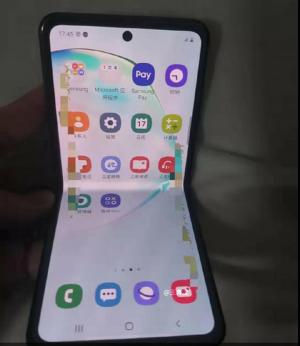
The design looks somewhat similar to the clamshell Motorola Razr 2019 - but in Samsung's design (if this is indeed a Samsung phone) there is only a very small external display for notifications - which looks to be a white PMOLED.
IHS: rigid AMOLED displays increase their lead in the smartwatch display market
IHS Markit says that rigid AMOLED is the leading smartwatch display technology, with a market share of 36% (in Q4 2019) - up from a market share of only 14% in the beginning of 2019. Rigid AMOLEDs enjoy the fastest growth of all display technologies.
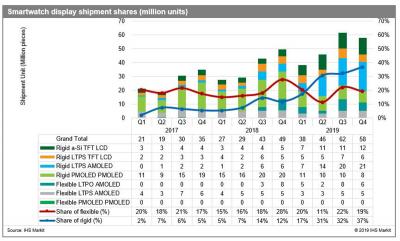
All OLED displays together (PMOLED, AMOLED and flexible OLEDs) take up a market share of 69%. The market share of PMOLED displays shrunk from 51% in 2018 to 19% in 2019 as rigid AMOLEDs starts to be adopted where PMOLED displays once were. To learn more about the PMOLED market and its future, see our PMOLED Market Report.
RiTDisplay sees lower PMOLED sales, shifts focus to micro LED displays
Taiwan-based PMOLED display maker RiTDisplay's CEO says that the company's PMOLED sales has been affected by e-cigarette bans in the US, and the company is now shifting its focus to develop micro LED displays (and also mini-LED ones). RiTDisplay's revenues in 2019 to date, $47.1 million USD, decreased 32.4% compared to last year.
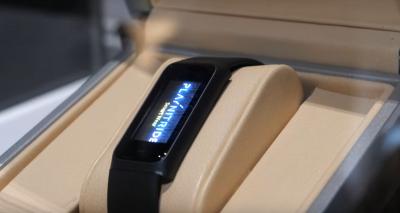
In May 2019 RiTDisplay announced a strategic partnership and share swap with Taiwan-based MicroLED developer PlayNitride. As part of the partnership, RiTDisplay gained access to PlayNitride's technology and is able to produce and sell micro-LED panel based on this technology and IP.
OLED-Info's foldable, flexible, VR/AR, transparent, microdisplays, PMOLED, automotive and graphene OLED market reports updated to October 2019
Today we published new versions of our market reports - that cover the flexible, VR/AR, microdisplays, automotive, PMOLED and graphene OLED markets. OLED-Info provides comprehensive niche OLED market reports, and our reports cover everything you need to know about the niche market, and can be useful if you want to understand how the OLED industry works and what this technology can provide for your own industry. The reports are now updated to October 2019.
 The Flexible and Foldable OLED Market Report:
The Flexible and Foldable OLED Market Report:
- Why flexible displays and lighting panels are so exciting
- What kind of flexible displays are currently on the market
- All about the foldable OLED market and industry
- What the future holds for flexible OLEDs
- How to acquire flexible OLEDs for your products
The report package provides a good introduction to the flexible and foldable OLED market - present and future. It details both flexible displays and lighting technologies. Read more here!
Pagination
- Previous page
- Page 3
- Next page
